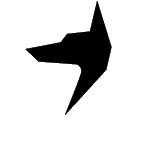As a responsible dog owner, it's important to prioritize your furry friend's health and well-being. One area that often goes overlooked is the potential damage that can be caused by a dog collar. While collars are essential for identification and leash attachment, improper use can lead to serious harm, particularly to the delicate trachea. In this blog post, we will explore how to avoid damaging your dog's trachea with a collar and discuss the symptoms of a damaged dog trachea.
WHY IS THE TRACHEA VULNERABLE?
The trachea, commonly known as the windpipe, is a tube-like structure that allows air to pass in and out of the lungs. In dogs, the trachea is relatively narrow and made up of cartilage rings, which provide support. However, these rings can be easily damaged if excessive pressure is applied, leading to tracheal collapse or injury.
CHOOSE THE RIGHT COLLAR
When selecting a collar for your dog, it's crucial to consider their size, breed, and specific needs. Here are some tips to help you choose the right collar:
- Opt for a harness: Harnesses distribute pressure more evenly across the chest and shoulders, reducing the strain on the trachea.
- Use a wide collar: If you prefer a collar, choose one that is wide and padded to minimize pressure on the trachea.
- Avoid choke chains and prong collars: These types of collars can cause significant damage to the trachea and should be avoided.
PROPER COLLAR FITTING
Even with the right collar, improper fitting can still lead to tracheal damage. Follow these guidelines to ensure a proper fit:
- Measure your dog's neck: Use a flexible tape measure to determine the circumference of your dog's neck.
- Allow for two fingers of space: When fastened, the collar should be snug but not tight. You should be able to fit two fingers between the collar and your dog's neck.
- Regularly check the fit: As your dog grows or gains/loses weight, regularly check the collar's fit to ensure it remains comfortable and safe.
RECOGNIZING THE SYMPTOMS OF A DAMAGED TRACHEA
It's essential to be aware of the signs that your dog's trachea may be damaged. If you notice any of the following symptoms, consult your veterinarian:
- Harsh, honking cough
- Difficulty breathing or wheezing
- Exercise intolerance
- Blue-tinged gums or tongue
- Collapsing episodes
Remember, early detection and intervention are key to preventing further damage and ensuring your dog's well-being.
CONCLUSION
Protecting your dog's trachea is of utmost importance. By choosing the right collar, ensuring a proper fit, and being vigilant for any signs of damage, you can help keep your furry friend safe and healthy. Remember, your dog relies on you to make the best choices for their well-being, so take the necessary steps to avoid any potential harm to their trachea.

